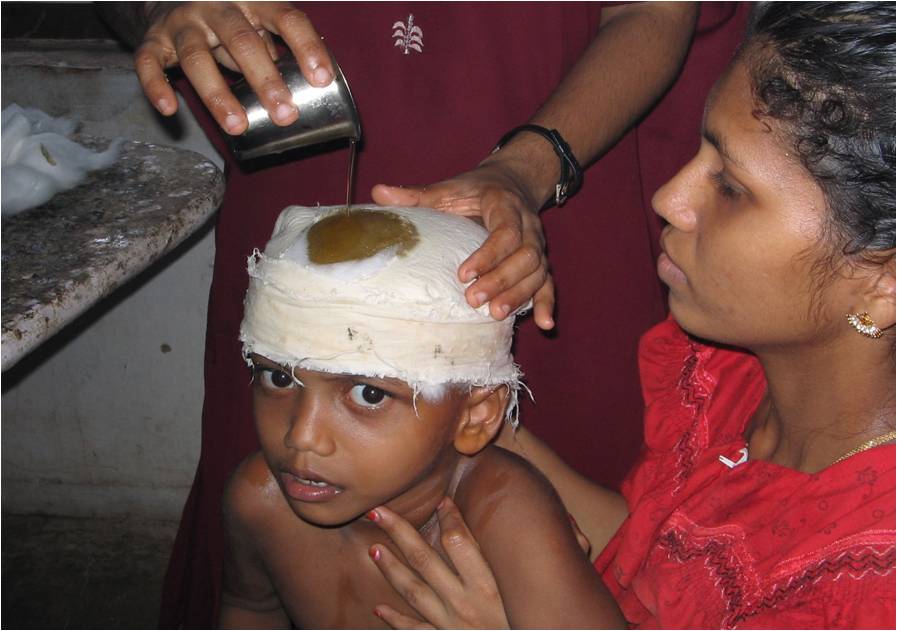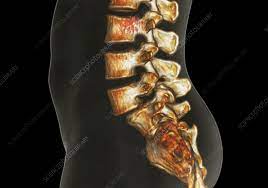SUPER SPECIALTIES
Autism and PDD

ASD and PDD
Autism spectrum disorder (ASD)
It is a developmental disability caused by differences in the brain.
There are five major types of autism which include Asperger’s syndrome, Rett syndrome, Childhood disintegrative disorder, Kanner’s syndrome, and Pervasive developmental disorder – not otherwise specified
Current treatments for autism spectrum disorder (ASD) seek to reduce symptoms that interfere with daily functioning and quality of life. ASD affects each person differently, meaning that people with ASD have unique strengths and challenges and different treatment needs. Therefore, treatment plans usually involve multiple professionals and therapies that are catered toward the individual.
Snehalayam Ayurveda provides Ayurvedic management besides giving assistance in education and health in community, or home settings, or a combination of settings. It is important that providers communicate with each other and the person with ASD and their family to ensure that treatment goals and progress are meeting expectations.
As individuals with ASD exit from high school and grow into adulthood, additional services can help improve health and daily functioning, and facilitate social and community engagement. For some, supports to continue education, complete job training, find employment, secure housing and transportation may be needed.
Pervasive Developmental Disorder
Pervasive developmental disorder is a condition that involves a group of challenges, mainly centered around delays or difficulties with social and communication skills. Symptoms may show before the age of three years and can include, but are not limited to, difficulty in using and understanding language, difficulty relating to people, objects, or events, and difficulty with adapting to changes in routine or familiar surroundings.
Pervasive developmental disorder is a subtype of autism spectrum disorder but we should note that PDD is diagnosed in individuals who meet some but not all criteria of ASD. In layman’s terms, people with PDD tend to display mild ASD symptoms. For this reason, PDD is often also termed atypical autism.
In Snehalayam Ayurveda you will get services of eminent personalities who are experts and experienced in management of ASD and PDD. Snehalayam Ayurveda successfully child disability depending upon their severity and chronicity.
Cerebral Palsy

Cerebral Palsy
A Child affected with Cerebral palsy is dependent on parents or other help mainly because he has not got early intervention based on Ayurvedic principles. The dependency will be less and the child may express his ideas more successfully with proper and timely treatment and training. In such a scenario, Snehalayam Ayurveda’s combined effort by a team of physicians, well-trained therapists and parents can help the child to be better in movement, coordination and communication.
Cerebral palsy (CP) is a leading cause of childhood disability affecting function and development. The global incidence of CP is 2:1000.
Cerebral palsy (CP) is defined as a non-progressive neuromotor disorder of cerebral origin. Motor deficits are usually accompanied by disturbances of sensation, perception, cognition, communication and behavior.
Cerebral palsy is caused by damage to the motor control centers of the developing brain and can occur during pregnancy, during childbirth, or after birth up to about age three. About 2% of all cerebral palsy cases are believed to be due to a genetic cause.
According CP can be taken as Vata Vyadhi as far as its etiology and symptomatology are concerned.
Various Panchakarma procedures like Udwartana (medicated powder massage), Sarvaanga abhyanga (full body massage with medicated oil), Baashpa sweda & Naadi sweda (steam bath) and Vasti (oil and decoction enemas) etc are found to be beneficial in the management of CP in children. Vasti is the major treatment for CP and it improves gross as well as fine motor functions, provides nourishment, improves overall general condition and quality of life in children with CP.
There are different types varieties of CP and important among them are the following:
- Spastic cerebral palsy — causes stiffness and movement difficulties
- Athetoid cerebral palsy — leads to involuntary and uncontrolled movements
- Ataxic cerebral palsy — causes a disturbed sense of balance and depth perception
Cerebral palsy affects muscle control and coordination, so even simple movements like standing still are difficult. Other vital functions that also involve motor skills and muscles such as breathing, bladder and bowel control, eating, and learning may also be affected when a child has CP. Cerebral palsy does not get worse over time.
Seizures, speech and communication problems and mental retardation are more common among kids with the most severe forms of CP. Many have problems that may require ongoing therapy and devices such as braces or wheelchairs.
Ayurvedic Panchakarma (five major ayurvedic procedures and many allied procedures which are intended to cleanse the body) therapy along with appropriate internal medication can provide good improvement in quality of life of CP patients.It is well known fact that internal medication along with Panchakarma procedures is more effective when compared with only oral medications. Various panchakarma procedures like Udwartana (medicated powder massage), Sarvaanga abhyanga (full body massage with medicated oil), Baashpa sweda & Naadi sweda (steam bath) and Vasti (oil and decoction enemas) etc are found to be beneficial in the management of CP in children.
Infertility and Impotence

Female infertility
Infertility means not being able to get pregnant after at least one year of trying (or 6 months if the woman is over age 35). If a woman keeps having miscarriages, it is also called infertility. Female infertility can result from age, physical problems, hormone problems, and lifestyle or environmental factors.
Most cases of infertility in women result from problems with producing eggs. In primary insufficiency, the ovaries stop functioning before natural menopause. In poly cystic ovarian syndrome (PCOS), the ovaries may not release an egg regularly or they may not release a healthy egg.
About a third of the time, infertility is because of a problem with the woman. One third of the time, it is a problem with the man. Sometimes no cause can be found.
Management of infertility in Ayurveda
Ayurveda supports health by strengthening body’s own self-healing and balancing mechanisms and doesn’t rely on intervention by any outside or foreign substance to replace or correct the hormones in the body. It focuses on the treatment of infertility holistically with an aim of improving the overall health and quality of life of the individual.
Treatment principles of Infertility in Ayurveda
- Agni deepana and Ama pachana
Ama formation (toxins created when undigested food forms in the stomach) by the imbalance in Agni (the power of digestion) lead to many diseases. Therefore, the treatment of Ama must always include the treatment of Agni, including the use of digestive and carminative Ayurvedic formulations, eating meals at proper time following an appropriate schedule. Ayurveda Panchakarma treatments help to eliminate Ama thus corrects Agni. Healthy Agni will also contribute to healthy Ojas. - Vatanulomana
The main dosha involved in infertility is Vata. So Vatanulomana (correcting the functions of Vata) is very important in the treatment of infertility. Ayurvedic formulations, following routine exercises and strict diet schedule will help in Vatanulomana. - Sodhana
Suitable sneha-swedas are done prior to sodhana. Then treatment modalities like Vamana (emesis), Virechana (puragation), Vasti (medicated enema) and Utharavasti special enema administered through urethral or vaginal routes) are done as per the condition of the patient. The patient has to follow peyadi krama (strict dietary regimen to be followed after Sodhana). This detoxification therapy helps in the expulsion of the toxins from the body. These therapies help to correct ovarian, tubular and uterine problems causing infertility. - Ayurveda treatments help in releasing tension and removing impurities from the body. They nourish the body, revitalize the mind and strengthen the immune system. They are beneficial in reducing stress, nourishing all dhatus of the body and pacifying Vata
.
Poly Cystic Ovarian Disease

PCOD and Female Sterility
PCOD stands for Poly Cystic Ovary Disease. The condition affects the ovaries in women by causing cysts. This leads to a hormonal imbalance with the body producing more male hormones than needed. The hormonal imbalance leads to problems in menstruation and fertility apart from other issues. Excess male sex hormones may result in various physical manifestations, such as excess facial and body hair and male-pattern baldness. Irregular periods. You may observe irregular periods or delayed menstrual cycle due to the abnormality in maturation of the egg.
Panchakarma treatment for PCOS
Regular practice of purificatory procedures is necessary. Purification of menstrual blood and normal functioning of deranged doshas(basic elements) are the primary concern in the purificatory treatment procedures. For this, panchakarma is implemented after snehana (oleation therapy) and swedana (sudation therapy) purva karma.
As obesity is one of the symptoms of PCOS, there is a considerable amount of vitiation of Kapha dosha and medo dhatu (adipose tissue that is, excessive fat) both adhere to each other. Here,rukshana therapy has importance as it is a lifestyle disorder. For this can use medicated decoction, medicated powder, buttermilk, etc internally by the advice of a physician.
Udwarthanam ( powder massage)
Is an option for this rukshana therapy externally. External application of medicated powder in the direction opposite to that of hair follicles with considerable pressure. It pacifies the accumulated Kapha dosha and medo dosha( excessive fat). As a result, it cleanses the body channels, increases blood circulation by dilatation of blood vessels, and increases the brightness of the skin.
Sneha Karma( oleation therapy)
Snigdha (unctuousness)is one of the most essential constituents of the body.it can be done both internally and externally. Internal administration of Sneha( oily substance) known as snehapana in which medicated ghee or oil administered through oral route in required quantities for a specific period of time. If the person is unable to take these oil substances directly, then it can administer along with food such as gruel, etc according to the requirements of an individual such as age, physical and mental strength, and habits. By this procedure, the body attains proper oleation and the vitiated doshas are in their excited state.
Swedana Karma
( Sudation therapy)
Followed by oleation therapy. The induction of sweating by steambath will liquefy the accumulated dosha and move it towards the digestive tract or the nearest route through which is being evacuated. By this procedure, perspiration increases, nourishes the tissues, cleanses the body channels, improves circulation, etc.
Panchakarma includes Vamana, virechana, kashaya vasthi, anuvasana vasthi, and nasya. All these procedures are applicable in the condition of PCOS.
Foods to avoid with PCOS
As it is a lifestyle disorder, food has the main role in developing PCOS in many young ladies. The food should be avoided with PCOS include
- Fried food
- Spicy food
- Junk food such as pizza, burgers, etc
- Sugary beverages such as energy drinks
- Carbohydrate-rich food
- Bakery items like pastries, white bread, dark chocolates, etc.
Spine Management

Human back is a complex structure of muscles, ligaments, and bone structures called vertebrae. They work together and support the body movement. However, sometimes there can be certain unfortunate circumstances where the spine disc may start degenerating. This is usually seen in cases of arthritis or if an individual develops an infection or inflammation of the spine. Some of these problems can change the structure of the spine or can damage the vertebrae and their surrounding tissue.
Spine Disorders: causes
The spinal cord is the major part of the central nervous system. Spine disorder or spinal disease refers to the impairment in the structure and function of the backbone which leads to severe back pain, stiffness and many other problems in daily routine. There are many types of spine issues. It may cause due to accidents, degenerative disorders, injuries, infections, tumors, medical conditions, bone changes due to progress of age etc.
As age increases degeneration of the spine is common. The degenerative and allied conditions of spine include
- Lumbar disc prolapse Rheumatoid arthritis Spondylolisthesis,
- Spinal cord and vertebral tumors,
- Sciatica,
- Post Trauma and Infection problems
Some other conditions causing spinal disorders include
- Myelopathy
- Radiculopathy
- Scoliosis
- Osteoporosis etc.
Ayurveda provides many treatments with low risk and minimally invasive to treat spine disorders.
Management of Spine problems
Spinal diseases can be cured by the ancient treating procedures like Swedana, Vasti, Kati Vasti, Meru Chikista, Lepanam etc. These treatments eliminate toxins accumulated in your body effectively and give a healthy body and a healthy life.
Customised Panchakarma treatment is also used in spine related problems to restore the vitiated doshas and maintain the harmony of the body.
The strength of Ayurveda in treating the spine area is appreciated globally, as it addresses the root cause of the spinal disorders and helps in curing permanently without any surgical process.
Vasti is very important panchakarma treatment in Ayurveda for curing spinal disease permanently. This treatment is mainly concentrated in alleviating vitiated Vata dosha with in the body.
Kati Vasti is a reputed ayurvedic procedure which helps in treating back pain especially lower back pain caused due to spinal diseases. This procedure helps in treating spinal disorders due to fractures, dislocation, degeneration, and tumors etc.
Meru Chikitsa which is an ancient Ayurveda procedure to strengthen the bones and joints and useful in spinal disorders. Ayurveda is a cost-effective procedure and prevents the need for the surgery for your spinal disorders. It is clinically proven that Ayurveda delivers the best results as it is the natural healing mechanism of the body.
Snehalayam Ayurveda has a reputation in managing spinal problems effectively whenever surgical correction is not needed or not possible. For queries and appointment call us on
Palliative Care

Palliative care and Pain management
Palliative care is used to manage a disease or medical condition that is serious or life threatening by relieving pain and other associated physical, emotional, or psychosocial symptoms.
Palliative care also eases other distressing symptoms like depression, anxiety, fatigue, insomnia, and shortness of breath. Palliative care provides advanced care planning and a support system to help you live a life that is as active, fulfilling, and as pain-free as possible
Pain management is a key part of end of life and palliative care. If pain is well managed, quality of life will be better. The person is likely to sleep better and have more energy during the day. If they feel less pain, they can be more active, which also reduces the risk of complications.
Palliative care physicians are specially trained in complex pain management resulting from serious illnesses such as cancer, so they are experts in administering managing opioids and other potent pain medications. Pain management specialists usually treat pain that does not result from complex, serious illness.
Palliative care and Ayurveda
Ahara Kalpana and Pathya Kalpana mentioned in Ayurveda may have significant role in nutritional aspect of palliative care by providing nutrition, food satisfaction, and health benefits and play a major role in quality of life improvement in terminally ill patients.
Shamana Chikitsa refers to all the Ayurveda procedures and protocols that reduce, suppress, and eliminate disease symptoms. This form of palliative care pacifies the body by balancing the three doshas – vata, pitta, and kapha. These treatments are much simpler and less severe than shodhana chikitsa. They are intended to make the patient recover and feel healthier by suppressing the disease symptoms. Hence, while the inherent disease might still be present the patient undergoing Shamana chikitsa can control the symptoms. Hence, this approach primarily has symptom care as its focus.
Ayurveda can play a major role in palliative care through some suitable, convenient treatment measures along with conventional palliative care. Ayurveda interventions viz. Vrana karma (wound care), Basti (per rectal drug administration), Snehan-swedan (massage, fomentation), Kawal-gandoosha (gargling), Shiro-snehan (oleation of head), etc. may contribute as alternative or complementary to ongoing palliative care practices of wound care, urine-bowel related issues, ambulation, oral hygiene, stress management, and pain management respectively. Various yaapana basti to nourish body and Nasya (Nasal instillation of medicine), Kar-napoorana (Ear drops), Shiro-snehana for irritable patients to improve quality of life (QoL) in cancer patients can be used. Ayurveda offers pain management through appropriate use of the above measures by reducing pain intensity, frequency, and dependence on pain killers. Conventional palliative measures can be supported by these measures of Ayurveda principles and practices for better convenience of patients without supplanting current practices.
Helpline number:
+91 9447243818

Free Medicine Clinics
Free Medicine Clinics are run under the scheme Free Medicine Sponsorship Program (FMSP) on every Wednedays at Snehalayam Ayurveda Multi Specialty Hospital OPD at Varkala. Consultation and Medicines are provided free of cost for those who book in advance for these clinics.
For booking call on 9447243818 or 88632818
OPD Timing: 10 am to 1 pm
